In June 2019, 120 medical officers participated in a week-long training on Bangladesh’s newly revised intrauterine device (IUD) curriculum. Representing both public and private facilities across the country, the trainees—mainly medical officers—built skills on needs-based family planning counseling, client screening techniques, IUD insertion and removal, and post-insertion follow-up. The training is the first of 13, which aim to cover relevant health providers in all family welfare clinics in the country by March 2020.
The Directorate General of Family Planning (DGFP), the agency responsible for family planning in Bangladesh, approved the updated curriculum and developed and obtained funding for the training plan following advocacy efforts led by Advance Family Planning (AFP) partner Marie Stopes Bangladesh and Bangladesh’s national family planning working group, the National Advocacy Advisory Group.
IUD use in Bangladesh peaked in the early 1990s at 2.2% among married women aged 10 to 49 [1]. But while the overall modern contraceptive prevalence rate increased from 36.2% in 1993-94 to 54.1% in 2014, IUD use declined to 0.6% [2].
Beginning in August 2017, Marie Stopes Bangladesh facilitated an AFP SMART strategy session to better understand the policy context and draw out potential advocacy solutions. During the workshop, the National Advocacy Advisory Group identified lack of information and training on IUD insertion and removal as a key barrier to uptake. In addition, the DGFP’s IUD curriculum had not been revised since 2007.
That same month, the advisory group formed a smaller expert team to work with the government to initiate the revision process. On August 30, 2017, the line director of the DGFP’s Clinical Contraception and Service Delivery Program (CCSDP) issued a formal letter approving the expert team to begin work. The core team included EngenderHealth, Jhpiego, the Obstetrical and Gynecological Society of Bangladesh, Marie Stopes Bangladesh, and the DGFP.
The expert team revised the curriculum over a period of six months. After sharing with the curriculum with key stakeholders, the DGFP finalized and approved the updated curriculum on April 28, 2018.
Building on this momentum, in May, Marie Stopes Bangladesh worked with the DGFP to develop and obtain funding for a training plan based on the revised curriculum. The DGFP included the trainings in its annual plan for 2018-19. In August 2018, the Ministry of Health endorsed the plan and approved US $42,000 to implement the trainings.
Initially scheduled to take place in December 2018, the first round of trainings took place June 22-27, 2019. As a next step, MSB will follow up on continued implementation of the trainings. The DGFP included the trainings in its 2019-2020 operational plan.
References
[1] Mitra, S.N., M. Nawab Ali, Shahidul Islam, Anne R. Cross, and Tulshi Saha. 1994. Bangladesh Demographic and Health Survey, 1993-1994. Calverton, Maryland: National Institute of Population Research and Training (NIPORT), Mitra and Associates, and Macro International Inc.
[2] National Institute of Population Research and Training (NIPORT), Mitra and Associates, and ICF International. 2016. Bangladesh Demographic and Health Survey 2014. Dhaka, Bangladesh, and Rockville, Maryland, USA: NIPORT, Mitra and Associates, and ICF International.

